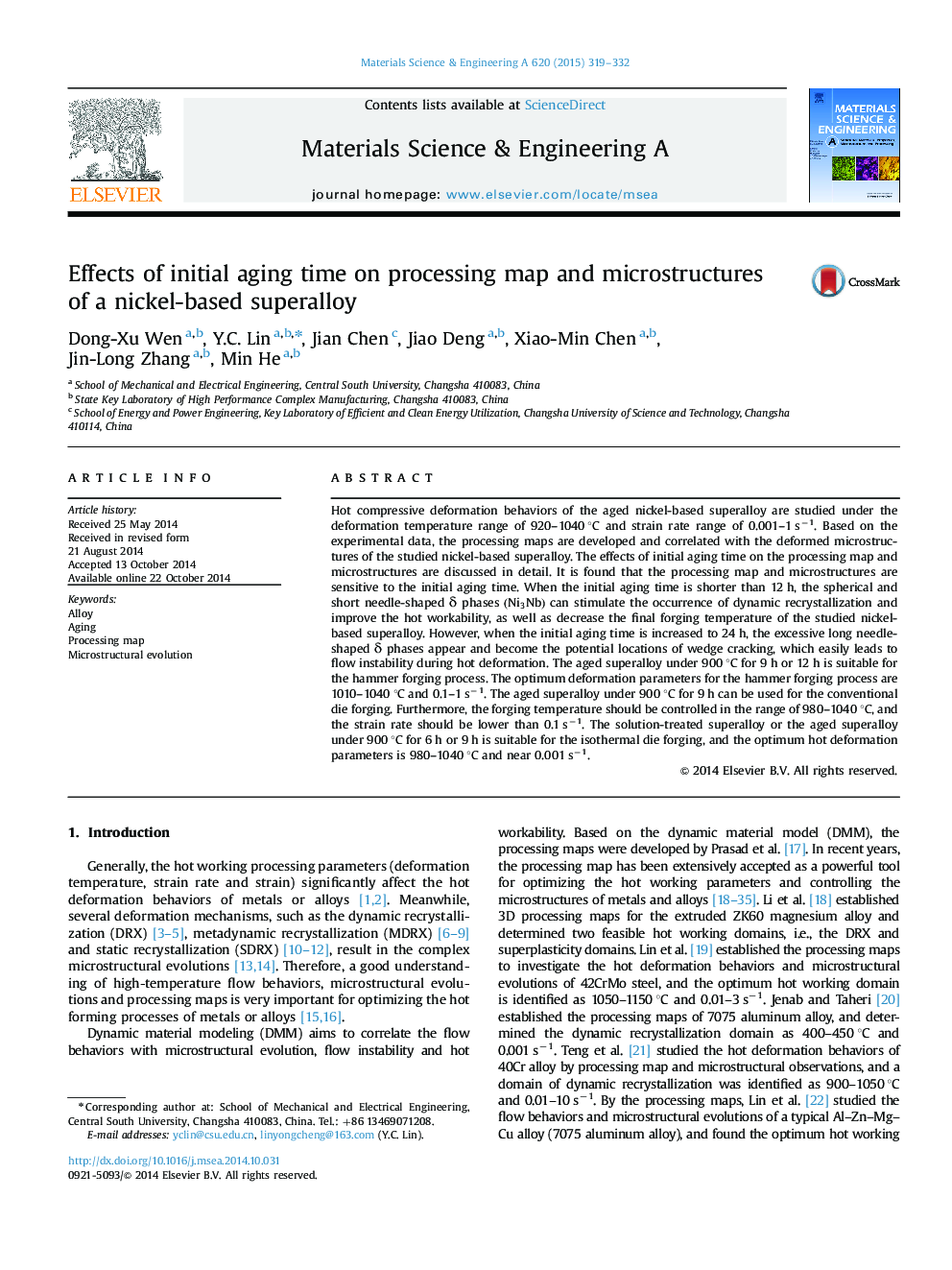| کد مقاله | کد نشریه | سال انتشار | مقاله انگلیسی | نسخه تمام متن |
|---|---|---|---|---|
| 1574602 | 1514723 | 2015 | 14 صفحه PDF | دانلود رایگان |
Hot compressive deformation behaviors of the aged nickel-based superalloy are studied under the deformation temperature range of 920–1040 °C and strain rate range of 0.001–1 s−1. Based on the experimental data, the processing maps are developed and correlated with the deformed microstructures of the studied nickel-based superalloy. The effects of initial aging time on the processing map and microstructures are discussed in detail. It is found that the processing map and microstructures are sensitive to the initial aging time. When the initial aging time is shorter than 12 h, the spherical and short needle-shaped δ phases (Ni3Nb)(Ni3Nb) can stimulate the occurrence of dynamic recrystallization and improve the hot workability, as well as decrease the final forging temperature of the studied nickel-based superalloy. However, when the initial aging time is increased to 24 h, the excessive long needle-shaped δ phases appear and become the potential locations of wedge cracking, which easily leads to flow instability during hot deformation. The aged superalloy under 900 °C for 9 h or 12 h is suitable for the hammer forging process. The optimum deformation parameters for the hammer forging process are 1010–1040 °C and 0.1–1 s−1. The aged superalloy under 900 °C for 9 h can be used for the conventional die forging. Furthermore, the forging temperature should be controlled in the range of 980–1040 °C, and the strain rate should be lower than 0.1 s−1. The solution-treated superalloy or the aged superalloy under 900 °C for 6 h or 9 h is suitable for the isothermal die forging, and the optimum hot deformation parameters is 980–1040 °C and near 0.001 s−1.
Journal: Materials Science and Engineering: A - Volume 620, 3 January 2015, Pages 319–332
